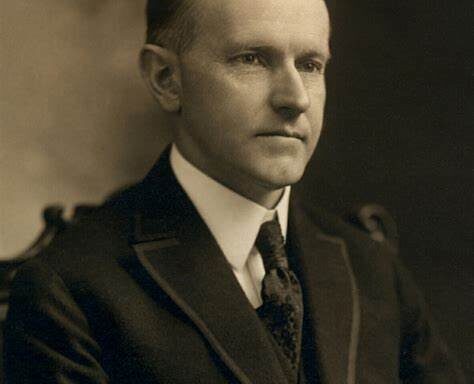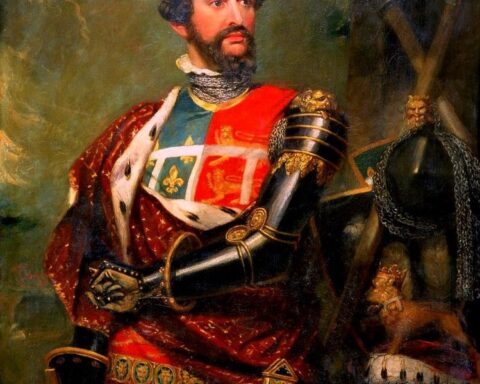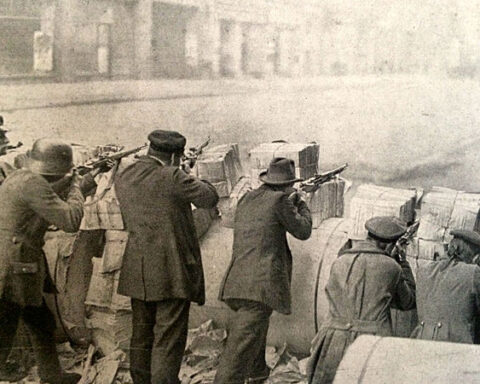What Is This Book About?
William Cook and Ronald Herzman describe the purpose of their book, The Medieval World View, as creating a springboard for students of medieval studies. They recognized that most modern students possess little prior knowledge of the subject, and need some background material. “…[A]fter reading the book one will have a better sense of how to approach any medieval literary text, artistic monument, historical document, or musical work in a more meaningful way” (2004, xiii). The book is designed to introduce the student to the general medieval world, in order that future studies will have some context in which to take root.
This purpose is further explained in the bibliography; after reading and understanding the contents of the book itself, the multiple sources, while not comprehensive, are a good starting point for delving more deeply into the study of the Middle Ages (289); only after reading the book will most students be prepared to begin a deep study of the medieval world. These instructions, located at the back of the book, form an effective bookend with the directions from the introduction. A progression through the book will prepare the student to engage the primary and secondary sources in a more effective manner than had it been attempted without the foundation provided in the book. The book serves as “…and introduction to the Middle Ages, for the general reader” (xviii).
Why Did The Authors Write The Book?
The primary reason for writing, in their opinion, is because there is little material available to help new students to engage medieval studies. Because modern students are far removed from the medieval world, they have difficulty digesting the work and scholarship focused on that era. The authors determined to provide a bridge to connect students who were ignorant about the topic with the deeper studies that scholars have produced (xiii).
The book began as a week-long classroom “boot camp” to prepare students for a course on Dante. Because many of the students had little experience with medieval studies, the authors wanted to provide them with some context for the things that would be studied. The success of that endeavor led them to turn their material into book form, so that it would be available to a larger audience (xvii – xviii).
The authors provide a foundation upon which to build deeper studies, directly introducing many of those studies into the text and bibliography. Using these sources, the book introduces the major characters and themes of medieval society, allowing the reader to engage them in an understandable way. Quotes and allusions to original sources serve as a starting point for the reader to delve deeper into the text of the book, struggle with the concepts, and then emerge more prepared to engage the original source (xviii).
What Is The Main Thesis/Argument Of The Book?
Ultimately, Cook and Herzman are making two related arguments: first, deep study of medieval times is difficult for most modern students, so some preliminary help is beneficial; second, the study itself is worth the effort. Therefore, they believe that it is a good use of a student’s time to read the book, in order to be prepared for future, more comprehensive, studies in the subject.
Tying those two arguments together, the book intends to introduce the reader to enough primary sources and historical events from the Middle Ages, along with explanations, that the reader will feel prepared to tackle a more detailed study in the future. The authors are not trying to argue that the book is a comprehensive study of the period. In fact, they clearly point out that they realize the dangers of truncating the research and study of some people, events, and settings in the book, for fear of becoming simplistic. Yet their goal is to introduce, not to comprehensively present every detail (xiv).
To accomplish their goal, the authors spell out implications for their approach: they intend to “…reconstruct important elements of the Middle Ages…” by emphasizing “…the differences between that age and our own”; secondly, they treat the whole complex topic of the Middle Ages as one unit (along with all the aforementioned potential problems); thirdly, they recognize the similarities and differences between the various stages of the Middle Ages (xviii-xv).
The reason that this topic deserves this effort, according to the authors, is that this period served as the foundation for our own society. While not the only historical underpinning, it was nevertheless an important one. Rather than the Renaissance serving as a “…dismissal of the preceding years…” it is important to see that “out of the transformation of medieval society at the end of the Middle Ages, the passage to modernity came without…” the chaos that heralded the end of the Roman Empire a thousand years before (277-278). In fact, the cultural developments of the middle Ages helped to create the world that exists today.
What Are The Main Ways In Which The Scholars Support The Thesis/Argument?
Cook and Herzman organize the book chronologically, by using the first 90 pages (out of 278) to discuss “The Foundations of The Middle Ages”, then moving into “The Early Middle Ages” up to page 177, and concluding with “The High Middle Ages and Beyond” (vii). This equal proportion for each section keeps the book balanced, with each time period receiving equal attention. It does seem that the very organization of the book indicates a desire to fairly discuss the overall period.
The first section of the book, “The Foundations of The Middle Ages,” deals with Biblical and Christian themes and topics, since “[t]he document most important for understanding the period is the Bible…” (xiv), though the Greco-Roman was also an important source of the civilization of the period (90). The chapter that focused on the Bible serves as a brief introduction to that book, by discussing the content, divisions within, and historical setting of the various parts. Since Christianity was such an important part of medieval life, the authors argue that it is important to have at least a cursory understanding of the Bible, in order to understand the social customs, and cultural expectations of the Middle Ages, as exemplified by the art work of the period (4-22).
Classical influence from Greece and Rome were also prevalent. The Middle Ages are the time between Ancient History and Modern History. The authors argue that the primary influence of Greece on the medieval world was found in the influence of the philosophers, Plato and Aristotle (23). These two men struggled with the idea and meaning of “truth” and “reality,” which fit nicely with the major questions of medieval life (24). “Plato is the philosopher of the realm of the ideal, [while] Aristotle is the philosopher of everyday experience” (25). The philosophies that Plato and Aristotle developed were used by Augustine, for example, who was very influential in the Christian world (26 ff).
The Classical Age also produced literature and rhetoric (Virgil, Homer, Cicero, Ovid, etc.) that was used in the Middle Ages. Likewise, the rhetoric of the ancients influenced monasticism and the dialogue that took place within the Church (27-28). The concept of the Roman Empire outlasted the actual empire by several centuries. It was that concept that fueled much of the political intrigue of the middle ages (35). While there was some overlap between the Biblical and Classical thinkers in ancient times, they were primarily independent of one another. As Christianity spread during the late Roman period and into the Middle Ages, “…the two cultures began to interact with one another” (37).
This portion of the book concludes with Cook and Herzman devoting two chapters to Christianity, especially the Latin Fathers. A quick scan of the history of Christianity, from its beginnings until its cultural acceptance under Emperor Constantine, is presented. Christianity intermingled and co-existed with pagan thought, and attention is given to how the Church dealt with internal problems. The final chapter of this section discusses Jerome and Augustine, who were both very influential “Fathers” of the Church. Jerome provided translations into Latin of many texts. His translation of the Bible, the Latin Vulgate, was the common Bible used in the Middle Ages (60), and though he was a theologian, he is best remembered as a translator. Augustine was perhaps the most influential theologian of the Roman Catholic Church. This section utilizes writings from Jerome and Augustine, in addition to other scholars to illustrate and support the points.
After the fall of Rome in the late 5th century, history moved into “The Early Middle Ages.” There was a time of transition from the ancient world to the medieval. This is covered in one chapter, bridging the ancient to the medieval. Since the power of the Roman Empire had moved east to Constantinople, a brief excurses is made into that topic. The Empire moved east, but the Germanic tribes began to move south past the former borders with the Romans. This migration was not always violent and aggressive, but often welcomed. Eventually, the Germans became Christians and dominated the society. The Byzantines occasionally intervened, but primarily, the western half of the Empire was overrun by various Germanic peoples. The Germanic tribes also settled Britain, where Christianity became dominant, and began sending missionaries back to the continent.
During this time, the secular powers were often weak, so the Church frequently filled the vacuum (111). This would have major implications on the future of European medieval culture. Art from this period continued to be dominated by religious themes, but were often inter-mingled with intellectual or classical components (120). This transitional period was the beginning of a period that culminated with Charlemagne (128). Primary sources, including law codes, treatises, and more, as well as modern scholarship were used for support.
 Amidst the transition, Monasticism began to flourish within Christianity. Though this movement began during the Roman Empire, primarily in the East, it soon began spreading across the empire. The people of the era saw these holy men and women struggling with spiritual problems, and overcoming them. The monks intended to “enter God’s kingdom” and to have purity of heart (132). Both eremitic and cenobitic monasteries were developed and some from that era are still in existence (which is another argument for why this overall topic is a worthwhile study). Benedict developed his “rule” or code of conduct for monastics. Using his rule, monasteries began to spring up across Europe and eventually took on the role of education for the society. Many Church leaders were drawn from monastic ranks (142). This chapter contained numerous primary sources from the period, including papal decrees and books, quotes and sayings from monks and letters from various people of historical importance.
Amidst the transition, Monasticism began to flourish within Christianity. Though this movement began during the Roman Empire, primarily in the East, it soon began spreading across the empire. The people of the era saw these holy men and women struggling with spiritual problems, and overcoming them. The monks intended to “enter God’s kingdom” and to have purity of heart (132). Both eremitic and cenobitic monasteries were developed and some from that era are still in existence (which is another argument for why this overall topic is a worthwhile study). Benedict developed his “rule” or code of conduct for monastics. Using his rule, monasteries began to spring up across Europe and eventually took on the role of education for the society. Many Church leaders were drawn from monastic ranks (142). This chapter contained numerous primary sources from the period, including papal decrees and books, quotes and sayings from monks and letters from various people of historical importance.
One of the leading Germanic tribes, the Merovingians, soon replaced by the Carolingians, who came the closest to reuniting the former parts of the Roman Empire. Charles Martel successfully stopped an Islamic invasion into the heart of Europe, and his grandson Charlemagne was crowned Emperor by the Pope in Rome (146), resulting in a new relationship between secular and ecclesiastical governments. Here the book tended to use secondary sources.
After the fall of the Carolingians, a feudal society emerged. The Church continued to have a strong influence, while the secular hierarchy was more decentralized. Nobility was determined by the amount of land a man could rule. Contemporary authors stated that in this period, there were three types of people: those who pray, those who fight, and those who work (174).
Finally, the authors move to the latter portion of the period in question, where they continue to develop the changing nature of the relationship between the Church and the State. Again, there is a heavy dose of primary sources used, such as writing from Bernard of Clairvaux, as well as multiple secondary sources. Topics include the crusades, new monastic orders, and the fact that cities began to dominate as cultural and trade centers.
Following this section, two chapters discuss the 12th Century Renaissance and St. Francis of Assisi and the Mendicants. While the authors do include some primary sources, such as The Song of Roland and the writings of St. Francis, there are numerous secondary sources used to flesh out the narrative of these chapters. In this period, there was revived interest in Latin and Greek authors, as well as increased focus on the trivium and quadrivium (212-213). Influential teachers as Peter Abelard, Peter Lombard, and Bernard of Clairvaux come from this period. Educational changes included more emphasis on logic and law, resulting in a shift in educational systems (230).
Special attention is given to St. Francis Assisi in the book, as he was influential to the Roman Catholic Church, and thereby medieval society, as he transformed medieval spirituality (239). He founded the Franciscan Order of monks, with a focus on poverty and service, fighting against education in the monastery, in contrast to contemporaries (243). This Franciscan movement came to influence “all forms of expressions” (253), including art, poetry, drama, and more. Other mendicant orders were formed, and continued to have major influence for centuries.
The final chapter of the book focuses upon the 14th Century, a transitional time out of the Middle Ages and into the Renaissance. Major events, such as the Great Schism are presented, showing how European culture, which was moving toward a modern setting was influenced by the past millennium. While the topography didn’t change much during this final portion of the Middle Ages, there were numerous conflicts and cultural shifts (262-263). The authors were careful to include names that students might recognize, to serve as a touchstone with past knowledge, such as Joan of Arc. They conclude the book with the observation that the Renaissance is not a rejection of the Middle Ages, but a continuation and enlargement of it (277). The culture and society developed during the middle ages allowed for a peaceful transition into the Renaissance and modernity (278).
What Are The Strengths And Weaknesses Of The Book?
The authors were successful in accomplishing their proposed purpose. They do a good job of introducing neophyte students to a broad overview of the Middle Ages, including primary writings, as well as respected secondary sources. They present the information in an unbiased manner. Obviously, they do have a desire to show the importance of the time period, but they do not seem to “take sides”.
One strength that stands out is the ability of the authors to use names and events that are well known to serve as a touchstone for readers. This allows the student to have some sort of connection with the material, drawing them into further study. That is another strength: there are ample primary sources given, including a nice bibliography is provided for further study.
The major negative of the book is one the authors acknowledge – by covering so much information in such a short space, they necessarily condense the information. If a student is knowledgeable about some aspect of this material, they will find that the book does not cover it in detail, causing a student to wonder if the whole book is so simplistically developed.
One potential problem that any book like this might have is that continuing scholarship might outpace the book. However, these authors have turned that possibility into another strength by updating the book. This was primarily done to allow for newer research to be included (xviii). Of course, most of these updates are in secondary sources, since the primary sources are from the actual period, but these secondary sources allow for a more detailed study.
The book does accomplish its purpose, providing an overview of the Middle Ages, introducing primary and secondary sources that can be utilized for deeper research. The authors tackle the difficult job of introducing 1000 years of history in less than 300 pages, and do it well.
References
Cook, William R. and Ronald B Herzman. 2004. The Medieval World View: An Introduction. New York: Oxford University Press.
Book Review – "Medieval Worldview"
4 Comments
Leave a Reply
Latest from Culture

Dangerous Left Wing Rhetoric
On Saturday, July 13, 2024, an assassin came within inches of murdering Donald Trump on a live broadcast. Democrat talking heads immediately split into two camps: some said Trump staged the shooting

Movie Review: Streets of Fire
Underrated. Yes, the acting is forced, the lines are flat, the sets limited, but it makes up for it by being awesome. It's more of a modern Western than anything.

Calvin Coolidge on Independence Day
Speech Given July 1926 We meet to celebrate the birthday of America. The coming of a new life always excites our interest. Although we know in the case of the individual that

Edward the Black Prince
"Valiant and gentle...the flower of all chivalry in the world at that time.”

The Weimar Years – Part 5
Summary of the German Revolution, 1918-1919.


See also Lewis: the discarded image
https://www.amazon.com/Discarded-Image-Introduction-Renaissance-Literature/dp/1107604702
Excellent. Anything Lewis wrote is worth reading.
Thanks for highlighting this. I second Lewis’s The Discarded Image as worthy of study.
Sigh. Another book I need to add to my ever growing pile!